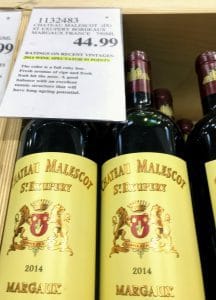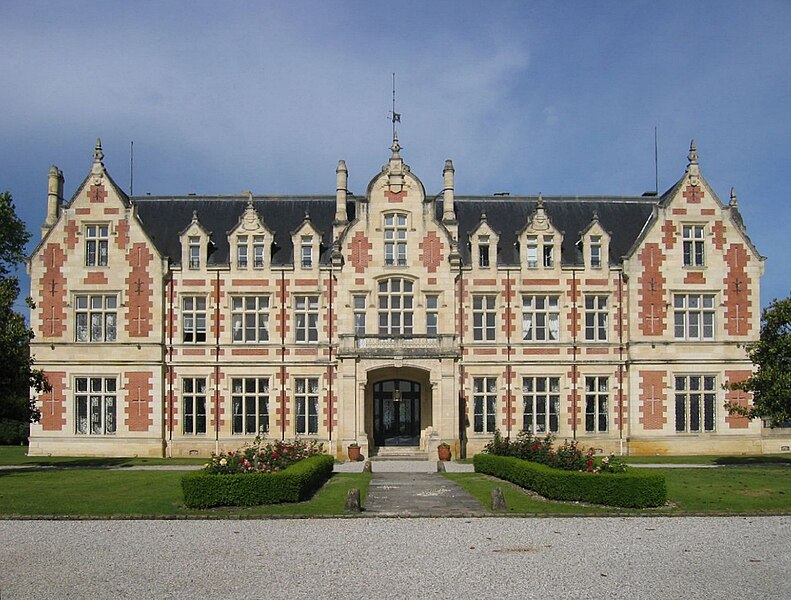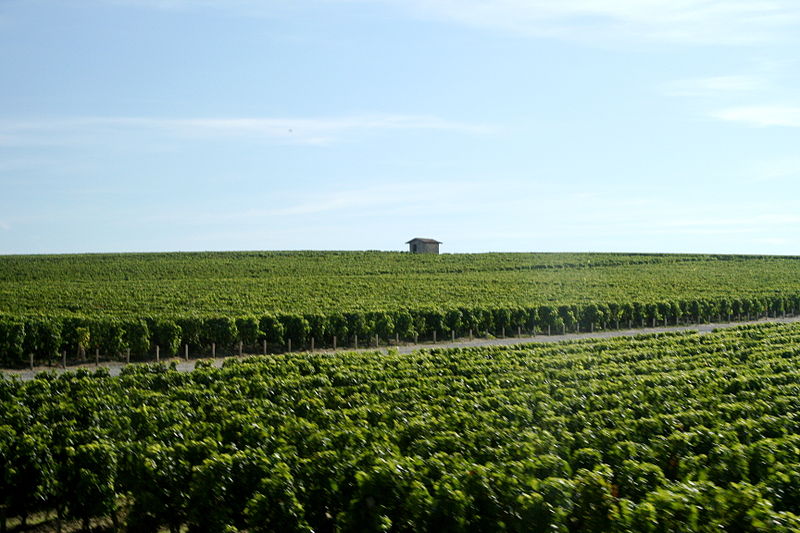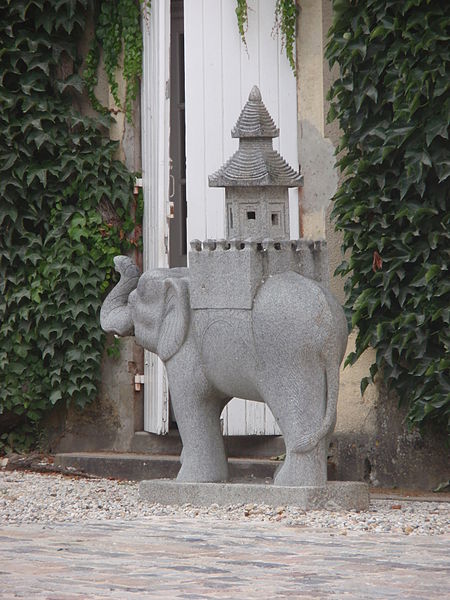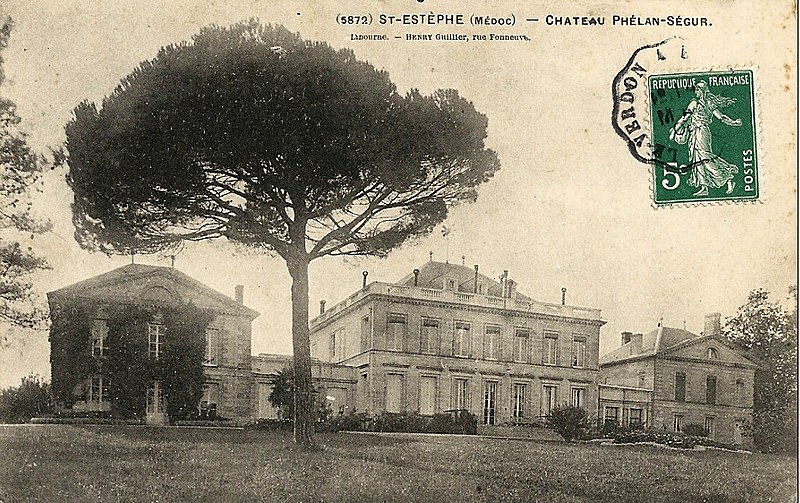
For the last several postings in our series about the 2017 Bordeaux Futures campaign, we’ve been skipping around Bordeaux to focus on the offers from different communes.
Today we’re going to take a break from that to look at some individual offers from the St. Estephe 2nd Growth Ch. Montrose and its second wine, La Dame de Montrose. Then we are going to head out to the Haut-Medoc AOC to check in on the 5th Growth Ch. Cantemerle before ending on the offer from another Vignobles Comtes von Neipperg estate with Ch. d’Aiguilhe in the Côtes de Castillon region of the Right Bank.
If you are new to our Bordeaux Futures series, be sure to check out my post on Why I Buy Bordeaux Futures as well as the our first Bordeaux Futures 2017 post covering the offers of Palmer, Valandraud, Fombrauge and Haut-Batailley.
At the bottom of page are links to the offers of other estates that we’ve reviewed so far in this series.
Now onto the offers.
Ch. Montrose (St. Estephe)
Some Geekery:
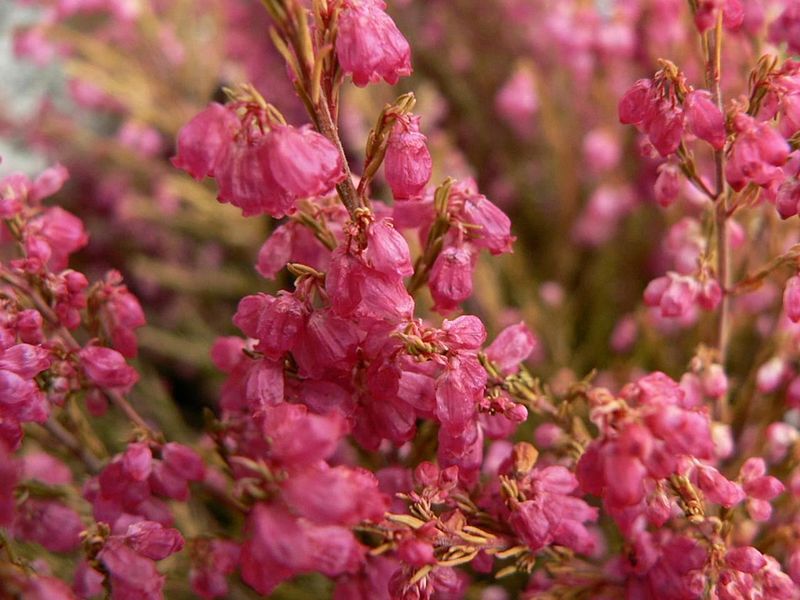
The vivid pink color of heather flowers in bloom on the hill that would become Montrose could be scene by sailors on the Gironde.
Founded in 1815, Ch. Montrose was the youngest estate to be classified 40 years later in the 1855 classification. However, the history of the land dates back much longer when it was part of the historical Calon-Ségur estate that was once owned by the Marquis de Ségur–the “Prince of Vines” who also owned what would become the First Growths of Ch. Latour, Lafite and Mouton-Rothschild.
The descendants of the Marquis sold Calon-Ségur in 1778 to Etienne Théodore Dumoulin. His son, also named Etienne Théodore, took interest in an unplanted hill on the property near the Gironde known as La Lande de l’Escargeon that was covered in heather, stunted trees, gorse and bramble. Underneath this growth was a croupe of gravel soils that Dumoulin suspected would be ideal for grape growing.
Dumoulin cleared the hill and renamed it Montrose (hill of pink) with the name likely alluding to the pink (rosé) heather flowers that were visible to sailors on the Gironde when they were in bloom. While Dumoulin would later sell Calon-Ségur in 1824, Montrose would stay in his family until 1861 when it was sold to an Alsatian businessman, Mathieu Dollfus.
Clive Coates notes in Grand Vins that Dollfus was a very progressive employer for his time–building housing and a well for all his winery and vineyard workers, offering them free medical care and paid maternity leave as well as dividing 10% of the profits between them on top of their salaries.
When Dolffus passed away in 1887, the estate was sold to the Hostein family who owned Ch. Cos d’Estournel. In 1896, it was passed to Louis Victor Charmoule who was born at Ch. Figeac in St. Emilion and married into the Hostein family.
The Charmoule family would own Ch. Montrose for more than 100 years until 2006 when it was sold to the Bouygues brothers who made their fortune in the construction and telecom business.

A bottle of 2000 Montrose, one of the last few vintages of the Charmoule family.
Under the Bouygues ownership, Herve Berland–formerly of Ch. Mouton-Rothschild–was brought in to manage the estate and Jean Bernard Delmas, previously of Ch. Haut-Brion, was coaxed out of retirement to oversee the winemaking both at Montrose and at the Bouyques’ neighboring sister property of Ch. Tronquoy Lalande.
The 2017 vintage is a blend of 76% Cabernet Sauvignon, 20% Merlot, 3% Cabernet Franc and 1% Petit Verdot. Around 15,000 cases a year are produced.
Critic Scores:
96-99 Wine Advocate (WA), 96-97 James Suckling (JS), 94-96 Wine Enthusiast (WE), 94-96 Vinous Media (VM), 91-94 Wine Spectator (WS), 97-99 Jeff Leve (JL), 93-95 Jeb Dunnuck (JD)
Sample Review:
This has more Cabernet Sauvignon in the blend this year, the highest level since 2006, because the Merlot didn’t quite make it through the September rains unscathed. The wine is correspondingly powerful with a robust accompanying acidity that promises a long life. The fruit character is savoury, succulent and extremely persistent, with fleshy blackberry alongside touches of redcurrant and a pulsating freshness that keeps on coming. Harvested 12-29 September with twelve days spent actually picking, compared to sixteen days over the last few years, with more hands on deck. They have never been affected by frost, as far as they can remember, and 2017 was no exception. The wind is always such a benefit here. (96 points) — Jane Anson, Decanter
Offers:
Wine Searcher 2017 Average: $133
JJ Buckley: $132.94 + shipping (no shipping if picked up at Oakland location)
Vinfolio: $138 + shipping
Spectrum Wine Auctions: $839.94 for minimum 6 bottles + shipping (no shipping if picked up at Tustin, CA location)
Total Wine: $134.97 (no shipping with wines sent to local Total Wine store for pick up)
K&L: $129.99 + shipping (no shipping if picked up at 1 of 3 K & L locations in California)
Previous Vintages:
2016 Wine Searcher Ave: $197 Average Critic Score: 95 points
2015 Wine Searcher Ave: $177 Average Critic Score: 94
2014 Wine Searcher Ave: $141 Average Critic Score: 95
2013 Wine Searcher Ave: $98 Average Critic Score: 92
Buy or Pass?
Montrose is a stalwart in my cellar but even though I know the style has been changing to make the wines more approachable younger, I never want to touch a bottle until it has at least 15 years of age on it. A couple years ago, I opened up a 2005 with just a little over 10 years of age and it was heartbreaking how tight and not ready that wine was–especially since that was my only bottle and it is now fetching over $200. Lesson learned.
Needless to say that means that even though this will undoubtedly be a tasty bottle and a solid value with pricing under 2014 levels, Montrose’s style doesn’t fit with my personal objectives of finding early-drinking “cellar defenders” from this 2017 vintage. So while this will be good buy for other Bordeaux fans, it will be a Pass for me.
La Dame de Montrose (St. Estephe)
Some Geekery:
La Dame de Montrose is named after Yvonne Charmolue, mother of Jean Louis Charmolue who created the wine in the 1980s. In January 1944, more than a year before World War II would come to an end, Yvonne’s husband, Albe Charmolue, passed away leaving just Yvonne to care for the estate and her young son.
During this time, Montrose was still recovering from having the chateau and several of the winery’s buildings occupied by the Wehrmacht artillery with portions of the vineyards used as a rifle range by the German soldiers. The unit’s presence and its location near the Shell petrol refinery in neighboring Pauillac made the area a frequent target for Royal Air Force bombers with several bombs that overshot their targets hitting the vineyards and creating huge craters.

A bottle of 1953 Montrose–one of several post war vintages that the widow Yvonne Charmolue would oversee the production of.
With only the assistance of Marcel Borie, owner of the 5th Growth Ch. Batailley and mayor of Pauillac, Yvonne single-handedly managed Ch. Montrose for the next 16 years until Jean Louis was ready to take over in 1960.
In 1982, around 30,000 cases a year of the Grand Vin of Montrose was produced. With the introduction of La Dame de Montrose in 1984 as well as the reintroduction of a mostly restaurant-only third wine, Le Saint Estephe de Montrose, in the 2000s that number has been halved to around 15,000 cases a year of the Grand Vin being produced from the 95 ha (235 acre) estate.
Today a little more than half of the crop is declassified with La Dame de Montrose getting around 30% of the total crop and Le Saint Estephe de Montrose getting about 20%. The remaining fruit is sold off in bulk.
The 2017 is a blend of 49% Merlot, 43% Cabernet Sauvignon, 4% Cabernet Franc and 4% Petit Verdot. Around 10,000 cases a year are produced.
Critic Scores:
91-92 JS, 89-91 WA, 88-90 VM, 90-92 JD, 89-91 JL
Sample Review:
Deep crimson. Much more scented than the Tronquoy-Lalande, lovely dark fruit on the nose. But still with that savoury graphite quality of the grand vin. Fully ripe but not sweet. Even a touch floral. Silky texture, tannins are so supple. Lightish but juicy on the mid palate and with a good balance between fruit and freshness even in this lighter mode. (16.5 out of 20) — Julia Harding, JancisRobinson.com
Offers:
Wine Searcher 2017 Average: $38
JJ Buckley: No offers yet.
Vinfolio: No offers yet.
Spectrum Wine Auctions: $221.94 for minimum 6 bottles + shipping
Total Wine: $39.97
K&L: No offers yet.
Previous Vintages:
2016 Wine Searcher Ave: $41 Average Critic Score: 92 points
2015 Wine Searcher Ave: $46 Average Critic Score: 91
2014 Wine Searcher Ave: $40 Average Critic Score: 90
2013 Wine Searcher Ave: $36 Average Critic Score: 88
Buy or Pass?
While I’m a huge fan of Montrose and I adore the story of La Dame, this is another second wine that has never really wowed me–even though it remains a decent value as the prices of other second wines keep jumping. There is nothing offensive about the wines but for the same $40-50 price point, I can find plenty of other Bordeaux wines that deliver more pleasure for my money.
I wouldn’t be opposed to purchasing this at a restaurant but even with pricing below 2014, there is nothing very compelling about this wine to entice me to buy for the cellar. Pass.
Ch. Cantemerle (Haut-Medoc)
Some Geekery:
Ch. Cantemerle is one of the oldest estates in the Haut-Medoc with a history dating back to the 11th century when the property belonged to the Lords of Cantemerle. Unlike the other vassals who were seigneurs of the powerful Lords of Blanquefort, Cantemerle were direct vassals of the king and had many privileges.

Ch. Cantemerle circa 1900-1920.
In 1575, the estate came into the hands of the Villeneuve family who would own Cantemerle for over 300 years and count Gabrielle-Suzanne Barbot de Villeneuve, author of Beauty and the Beast, as an extended member.
In the 19th century, the wines of Cantemerle where held in high esteem and regularly ranked as 4th or 5th Growths. But its entire production was sold almost exclusively through Dutch merchants so when the local merchants and brokers of Bordeaux put together the original 1855 Classification, Cantemerle was omitted.
When the owner, Madame Caroline de Villeneuve-Durfort, heard about this slight, she barged down to the offices of the Bordeaux Chamber of Commerce while the Paris Exposition unveiling the classification was still taking place. With over 40 years worth of receipts, she argued successfully to the head of the broker’s union that the wines of Cantemerle had a long track record of fetching prices on par with many of the wines that were included in the classification.
For her efforts, Cantemerle was added to the original document listing the estates of the 1855 classification, albeit clearly in a different handwriting than the other estates.
In the 20th century, the property came into the hands of the Dubois family who owned Cantemerle until 1981 when it was sold to the French insurance group SMABTP with the Cordier family (of Ch. Talbot and the notable negociant house fame) managing the vineyard and winemaking.
Today Cantemerle is still owned by SMABTP where it is part of a portfolio that includes the St. Emilion estates of Ch. Haut Corbin, Ch. Grand Corbin and Ch. Le Jurat. In 1993, Philippe Dambrine replaced the Cordiers as estate manager and is still responsible for production today.
The 2017 is a blend of 71% Cabernet Sauvignon, 25% Merlot and 4% Petit Verdot. Around 25,000 cases a year are produced.
Critic Scores:
93-94 JS, 92-94 WE, 89-91 WA, 89-92 VM, 87-90 WS, 87-89 JD, 90-92
Sample Review:
The 2017 Cantemerle is deep, fleshy and wonderfully expressive. Savory herb, tobacco, menthol, licorice, dark red cherry, smoke and incense run through this super-expressive, pliant Haut-Médoc Grand Cru Classé. All the elements simply meld together effortlessly. Rose petal, lavender and a host of floral notes add perfume to the finish. The 2017 should be one of the finer values of the year. Tasted two times. — Antonio Galloni, Vinous
Offers:
Wine Searcher 2017 Average: $29
JJ Buckley: No offers yet.
Vinfolio: No offers yet
Spectrum Wine Auctions: $179.94 for minimum 6 bottles + shipping
Total Wine: $31.97
K&L: $29.99 + shipping
Previous Vintages:
2016 Wine Searcher Ave: $34 Average Critic Score: 92 points
2015 Wine Searcher Ave: $37 Average Critic Score: 91
2014 Wine Searcher Ave: $34 Average Critic Score: 90
2013 Wine Searcher Ave: $37 Average Critic Score: 88
Buy or Pass?
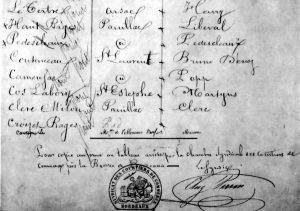
The inclusion of Cantemerle under Château Croizet-Bages in the original 1855 classification is noticeably smaller and in a different handwriting. Source
The history geek in me loves the story of Cantemerle and particularly the feisty Madame Villeneuve-Durfort who wouldn’t take no for an answer. When I look at photos showing the shaky and hastily added Cantemerle to the 1855 classification, I chuckle thinking of Madame Villeneuve-Durfort hovering over the shoulder of the scared broker and his pen.
However, despite that love and affection for the story, outside of the 2010 Cantemerle (WS Ave $55), I really haven’t found much in the glass to excite me. The pricing is certainly intriguing because there aren’t many classified growths being sold for less than $40–much less under $30–but I prefer to take a wait and see approach with Cantemerle. I may get a bottle when it hits the market (likely around the $35 price point then) and see if there is finally something there worth getting excited about. Till then I’ll Pass.
Ch. d’Aiguilhe (Côtes de Castillon)
Some Geekery:
While wine has been produced at the estate since the 1700s when it was owned by the Leberthon family, the modern history of Ch. d’Aiguilhe (meaning “needle”) began in 1989 when it was purchased by Stephan von Neipperg.
Von Neipperg, who also owns the St. Emillion Premier Grand Cru Classé ‘B’ estates La Mondotte and Ch. Canon-la-Gaffelière as well as Clos de l’Oratoire, Ch. Peyreau, Clos Marsalette in Pessac-Léognan, the Sauternes Premier Cru Ch. Guiraud, Capaia in South Africa and Bessa Valley in Bulgaria, brought in his longtime consultant Stéphane Derenoncourt and began renovating the estate and vineyards.
All the vineyards are farmed organically with many parcels biodynamic.
The 2017 vintage is a blend of 90% Merlot and 10% Cabernet Franc. Around 20,000 cases a year are produced though with close 60% of the production being lost to frost in 2017, that number will be much lower this vintage.
Critic Scores:
90-93 WS, 89-90 JS, 88-90 WA, 85-87 VM, 91-93 JD, 90-92 JL
Sample Review:
Brought up in 30% new barrels, the 2017 Château d’Aiguilhe offers a gorgeous perfume of framboise, blueberries, strawberries, and flowers. Possessing medium body, fine, silky tannin, impeccable balance and obvious minerality on the finish, it’s seriously good Côtes de Castillon that over-delivers. — Jeb Dunnuck, JebDunnuck.com
Offers:
Wine Searcher 2017 Average: $22
JJ Buckley: No offers yet.
Vinfolio: No offers yet.
Spectrum Wine Auctions: No offers yet.
Total Wine: $23.97
K&L: $22.99 + shipping
Previous Vintages:
2016 Wine Searcher Ave: $24 Average Critic Score: 90 points
2015 Wine Searcher Ave: $26 Average Critic Score: 90
2014 Wine Searcher Ave: $26 Average Critic Score: 90
2013 Wine Searcher Ave: $20 Average Critic Score: 87
Buy or Pass?
As I noted in my reviews of the 2017 offers for Canon-la-Gaffelière and Clos de l’Oratoire, I strongly equate the wines of von Neipperg and Derenoncourt with very New World-ish, Napa-like styles. While that is a style that I tend to avoid during more highly regarded Bordeaux vintages (where I’m looking for more classical and age-worthy Bordeaux), this more lush and fruit forward style fits perfectly into the mold of short-term consumption “cellar defenders” I aim for in vintages like 2017.
And the value is always there as well with it being very difficult to find sub-$30 Napa wines drinking to level of Château d’Aiguilhe. While I’m not going to spring for cases, this is an easy Buy for several bottles.
More Posts About the 2017 Bordeaux Futures Campaign
*Bordeaux Futures 2017 — Langoa Barton, La Lagune, Barde-Haut, Branaire-Ducru
*Bordeaux Futures 2017 — Pape Clément, Ormes de Pez, Marquis d’Alesme, Malartic-Lagraviere
*Bordeaux Futures 2017 — Lynch-Bages, d’Armailhac, Clerc-Milon and Duhart-Milon
*Bordeaux Futures 2017 — Clos de l’Oratoire, Monbousquet, Quinault l’Enclos, Fonplegade
*Bordeaux Futures 2017 — Cos d’Estournel, Les Pagodes des Cos, Phélan Ségur, Calon-Segur
*Bordeaux Futures 2017 — Clinet, Clos L’Eglise, L’Evangile, Nenin
*Bordeaux Futures 2017 — Malescot-St.-Exupéry, Prieuré-Lichine, Lascombes, Cantenac-Brown
*Bordeaux Futures 2017 — Beychevelle, Talbot, Clos du Marquis, Gloria
*Bordeaux Futures 2017 — Beau-Séjour Bécot, Canon-la-Gaffelière, Canon, La Dominique
*Bordeaux Futures 2017 — Vieux Chateau Certan, La Conseillante, La Violette, L’Eglise Clinet
*Bordeaux Futures 2017 — Clos Fourtet, Larcis Ducasse, Pavie Macquin, Beauséjour Duffau-Lagarrosse
*Bordeaux Futures 2017 — Kirwan, d’Issan, Brane-Cantenac, Giscours

 We are heading back to Pauillac to look at the offers for Carruades de Lafite–the second wine of Ch. Lafite-Rothschild–the 5th Growth Ch. Pedesclaux, the 2nd Growth Ch. Pichon Longueville Comtesse de Lalande and their wine second wine–Reserve de la Comtesse de Lalande.
We are heading back to Pauillac to look at the offers for Carruades de Lafite–the second wine of Ch. Lafite-Rothschild–the 5th Growth Ch. Pedesclaux, the 2nd Growth Ch. Pichon Longueville Comtesse de Lalande and their wine second wine–Reserve de la Comtesse de Lalande.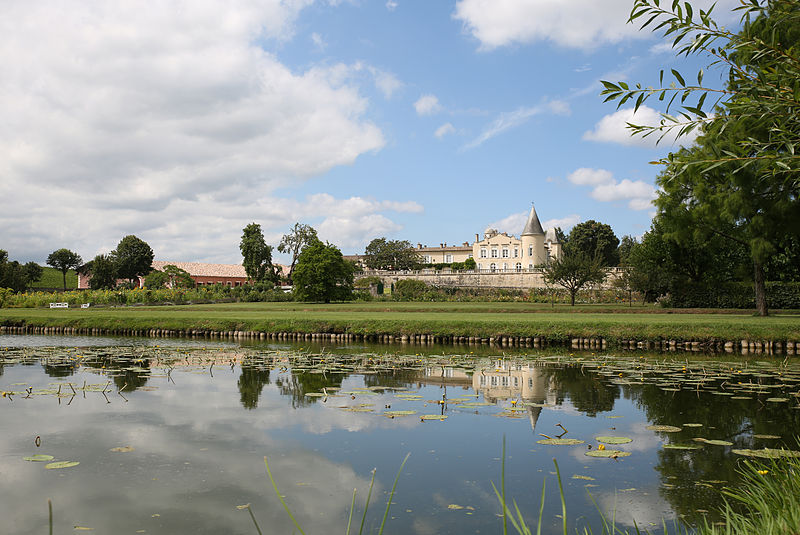
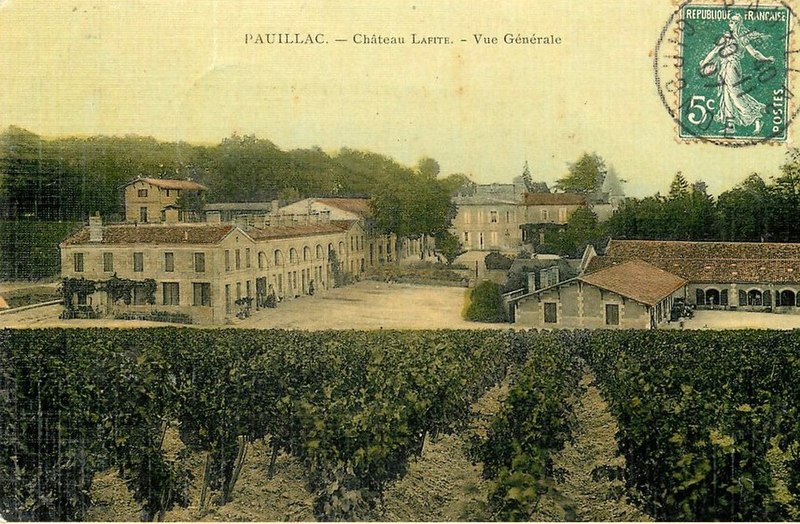

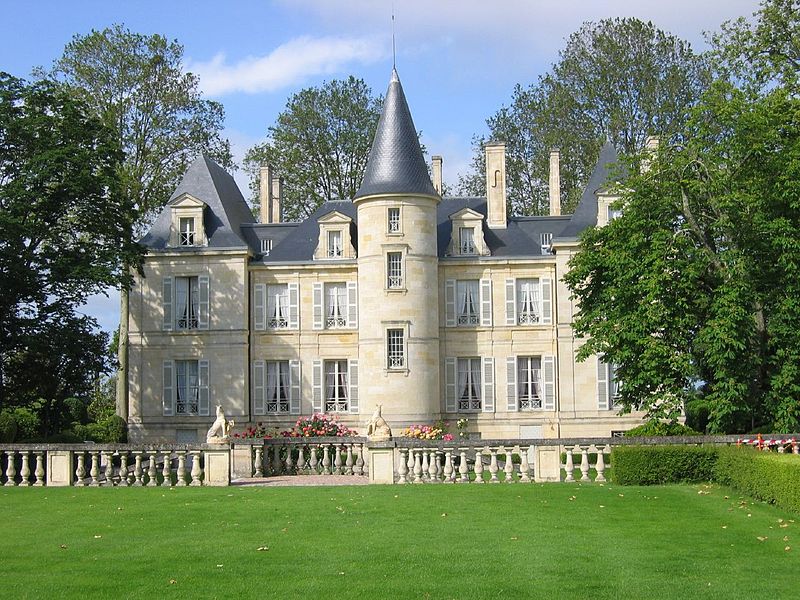

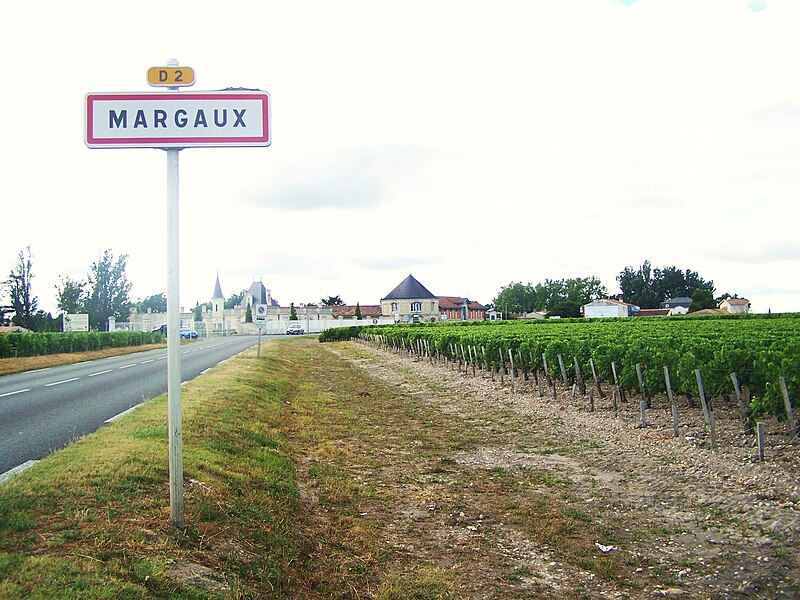 We are heading to Margaux as we continue our exploration of the 2017 Bordeaux Futures campaign.
We are heading to Margaux as we continue our exploration of the 2017 Bordeaux Futures campaign.
